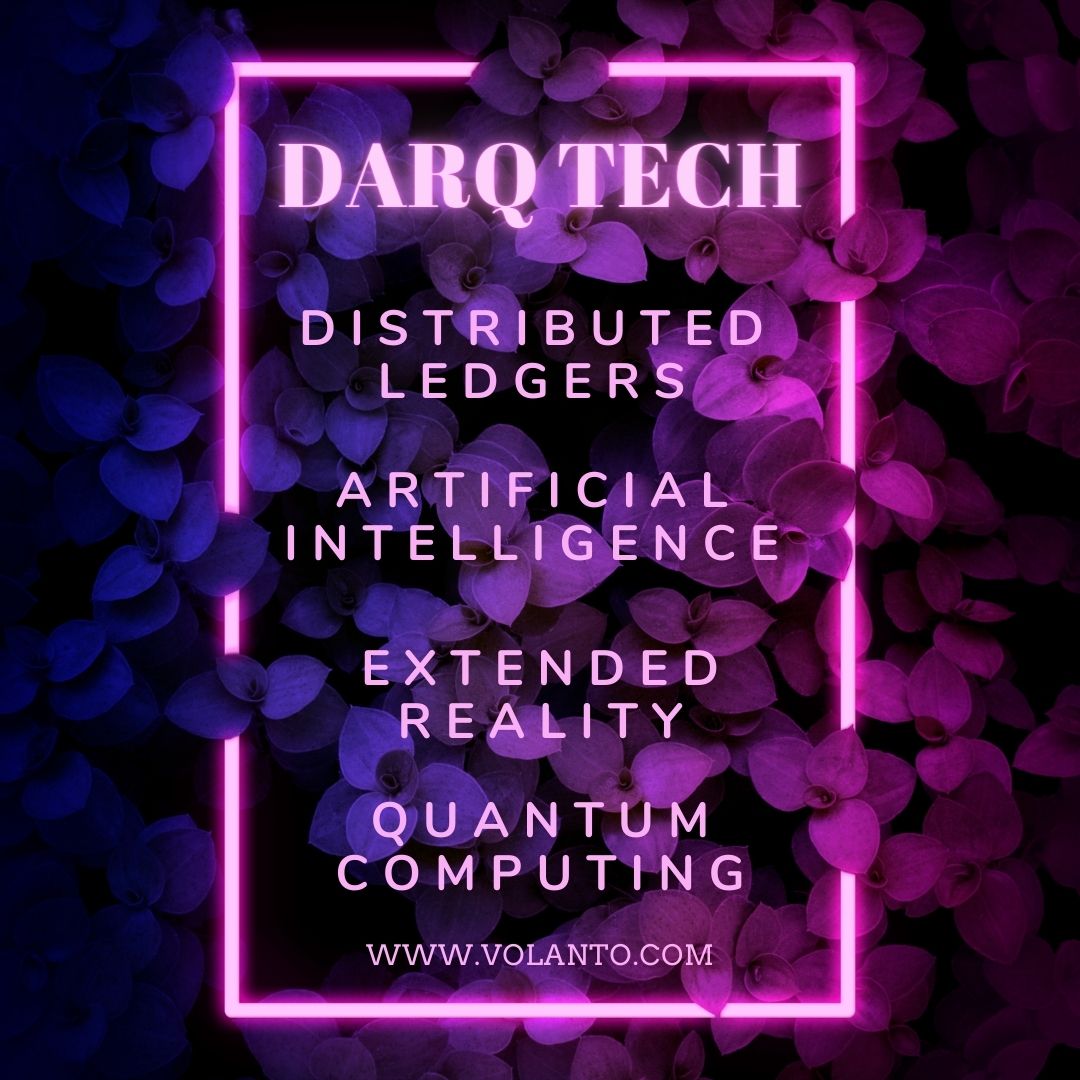
Breaking down the DARQĭARQ technologies mean to disrupt our reality. Now that tech is no longer uncharted waters and businesses can understand their client base more fully thanks to increased data collection capabilities, the time has come to get immersive. It changed a 9-to-5 service window to a 24/7 availability, put printers to rest and created consumer communities. SMAC revolutionized the way clients interacted with brands. Before DARQ technologiesĬompanies and individuals began developing their digital dexterity with SMAC (social, mobile, analytics and cloud technologies) during the last decade. So, are you ready to explore the DARQ? Let’s find out more about it. These technologies are already being used, in one way or another, by 89% of businesses, where they are helping to make processes better. The DARQ acronym stands for ( D)istributed ledger technology, ( A)rtificial intelligence, extended ( R)eality, and ( Q)uantum computing. It’s actually not one single technology, but a set of technologies, powerful enough to carry us into the post-digital era. Accenture’s Technology Vision Report reflects this change in our societies, and the message is clear: the DARQ age is upon us, and the future has never looked brighter. With very few spaces left untouched by the hand of technology, even physical transactions are in some way imbued in tech. What once was a competitive edge for businesses is today an expectation from clients and partners alike.
Darq technology full#
Users should refer to the original published version of the material for the full abstract.Long gone are the days where going digital was a matter of choice.

No warranty is given about the accuracy of the copy.

However, users may print, download, or email articles for individual use. Copyright of Problemy Zarzadzania is the property of Problemy Zarzadzania and its content may not be copied or emailed to multiple sites or posted to a listserv without the copyright holder's express written permission.To this end, we analyze the Black Swan theory (based on the COVID-19 pandemic case study) as the theoretical framework for the use of DARQ technology as a tool to reduce the occurrence of unpredictable events. The article contains conclusions from the research and indicates a recommendation for further work, which concerns extending the application of DARQ technology to predict and monitor disasters and unpredictable events. However, it should be noted that apart from the positives, the DARQ technology also poses some threats. Already today, each component of the DARQ technology has a significant impact on various sectors of the economy. Elements of the new DARQ technology, such as Distributed ledger, Artificial Intelligence, Extended Reality and Quantum computing, allow for abrupt changes in both the management system and the functioning of the organization. This may result in gradual and collision-free changes in the quality of the management system. Both of these technologies are compatible. Originality/value: The thesis has been substantiated that the transition from SMAC to DARQ technology can be done gradually. We consider the presented work as an introduction to broader research. Research limitations/implications: Due to the lack of practical applications of all the elements that make up the DARQ technology, the analysis of such components as Extended Reality (Virtual Reality), Quantum Computing (Virtual Computing Technology) is not complete and requires complementary research and a more complete analysis of its applications. Findings: The results of work on the DARQ technology that supports management systems allowed for the evaluation of usability both in terms of the expected effects and the areas of risk of application.


Design/methodology/approach: The research procedure consists of the following steps: literature analysis, conducting qualitative research and its presentation, obtaining expert opinions and recommendations for further research. We argue that the DARQ technology will support the management of network organizations in the first period of development. We present the thesis that DARQ technologies can help in building information systems aimed at both predicting and monitoring global crises.


 0 kommentar(er)
0 kommentar(er)
